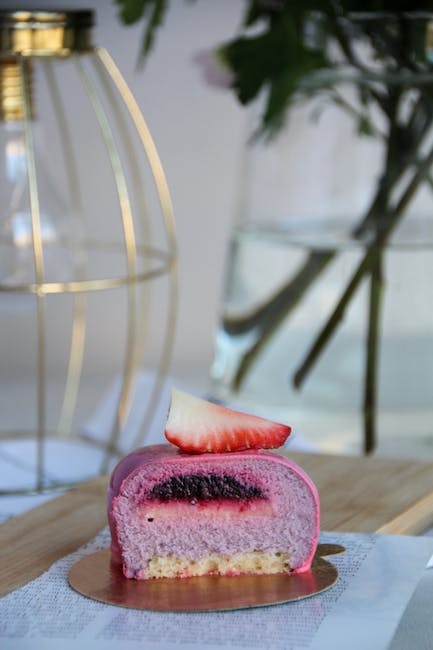Discovering the Fragrant and Versatile Osmanthus Flower
Have you ever heard of osmanthus? This delicate and fragrant flower is native to Asia, particularly China and Japan, and has been cultivated for centuries for its ornamental and medicinal properties. But osmanthus is more than just a pretty flower it has also been used in perfumery, culinary arts, and traditional medicine. In this blog post, we will explore the fascinating world of osmanthus and discover how it is used in different cultures around the world.
Ornamental and Medicinal Properties
Osmanthus is a flowering plant that belongs to the olive family. It is also known as sweet olive, because of its fragrant flowers that resemble the smell of ripe apricots or peaches. The plant has been cultivated for centuries for its ornamental and medicinal properties. Its flowers are used in traditional Chinese medicine to treat respiratory and gastrointestinal ailments, as well as to enhance skin health and reduce inflammation.
Perfumery and Essential Oil
Osmanthus has also been used in perfumery and essential oils. Its essential oil is extracted from the flowers and used in high-end fragrances, while its dried flowers are used to flavor tea, wine, and desserts. The essential oil has a sweet and floral aroma that is often compared to jasmine or orange blossom. It is a popular ingredient in perfumes, soaps, and lotions, and is known for its calming and uplifting properties.
Culinary Arts: Chinese and Japanese Cuisine
In Chinese cuisine, osmanthus is a popular ingredient in sweet dishes, particularly desserts. It is often paired with other ingredients such as rice, red beans, lotus seeds, and wolfberries to create a delicate and aromatic flavor profile. Some of the most famous osmanthus desserts in China include osmanthus jelly, osmanthus rice cake, and osmanthus sweet soup. In Japan, osmanthus is also used in traditional confectionery, such as wagashi and yokan. These sweets are often shaped into delicate flowers or leaves and are served with green tea during tea ceremonies.
Popularity in the West
Osmanthus has gained popularity in the West in recent years, as more people discover its unique flavor and aroma. It is now a common ingredient in gourmet restaurants and artisanal bakeries, where it is used to add a touch of elegance and exoticism to desserts. Some popular osmanthus desserts in the West include osmanthus panna cotta, osmanthus macarons, and osmanthus ice cream.
Conclusion
Osmanthus is a versatile and aromatic flower that has been used for centuries in different cultures around the world. From traditional medicine to culinary arts, osmanthus has many uses and benefits. Whether you are a fan of sweet desserts or high-end perfumes, there is something for everyone when it comes to osmanthus. So next time you come across this delicate flower, take a moment to appreciate its beauty and fragrance, and perhaps even try it in a new recipe or fragrance.
Discovering the Delicate Flavors and Health Benefits of Osmanthus Tea
Tea lovers, it’s time to add another flavor to your collection! Osmanthus tea, a popular Chinese tea made from dried osmanthus flowers, is becoming a favorite among tea enthusiasts worldwide. Not only does it have a sweet, floral aroma and a delicate, fruity taste, but it’s also packed with health benefits. Let’s dive into this tea’s unique flavors, brewing methods, and health benefits.
How to Prepare Osmanthus Tea
The brewing process of osmanthus tea is relatively simple. All you need is a teaspoon of dried osmanthus flowers and hot water. Steep the dried flowers in hot water for 3-5 minutes, and you’re good to go. You can enjoy it hot or cold, depending on your preference. Some people like to add a touch of honey or lemon to enhance the flavor.
The Sweet, Floral Aroma and Delicate Fruity Taste
Osmanthus tea has a unique flavor profile compared to other teas. The sweet, floral aroma is inviting and refreshing. The delicate fruity taste is perfect for those who prefer milder tea flavors. It’s a versatile tea that can be enjoyed on its own or as a base for other drinks and desserts.
Health Benefits of Osmanthus Tea
Osmanthus tea is not just delicious, but it’s also packed with health benefits. It’s believed to improve digestion, reduce inflammation, and boost the immune system. It’s rich in antioxidants, which can help protect the body against harmful free radicals. This tea is a great choice for those looking for a healthier beverage option.

Pairing Osmanthus Tea with Snacks and Desserts
Osmanthus tea is versatile and pairs well with light snacks and desserts. It’s often used as an ingredient in desserts such as osmanthus jelly, osmanthus cake, and osmanthus rice dumplings. Osmanthus jelly is made by combining osmanthus tea with agar-agar powder and sugar. It’s then allowed to set in a mold. Osmanthus cake is a sponge cake infused with osmanthus tea and topped with whipped cream and fresh fruit. Osmanthus rice dumplings are glutinous rice balls filled with sweet osmanthus paste. These desserts are not only delicious but also an excellent way to incorporate the health benefits of osmanthus tea into your diet.
Final Thoughts
Overall, osmanthus tea is a flavorful and versatile beverage that can be enjoyed in many different ways. Whether you prefer it hot or cold, on its own, or as an ingredient in desserts, osmanthus tea is an excellent addition to any tea lover’s collection. Not only does it taste great, but it’s also packed with health benefits. So, brew a cup of osmanthus tea today and enjoy its sweet, floral aroma and fruity taste.
Discovering the Sweet and Fragrant World of Osmanthus Desserts
If you love the taste of sweet and floral desserts, then you must try osmanthus. This fragrant flower native to Asia is not only known for its beautiful appearance but also its unique taste and health benefits. In this blog post, we’ll explore the world of osmanthus desserts and show you why they’re worth trying.
The Sweet and Fragrant Osmanthus Flower
The osmanthus flower has been a part of traditional Chinese cuisine for centuries. This fragrant flower is often used in desserts and sweet dishes due to its sweet and flowery aroma. The flower is available in various forms, including dried flowers, syrup, and jam. These different forms of osmanthus can be used to add a unique flavor to desserts, drinks, and even savory dishes.
Popular Osmanthus Desserts
Osmanthus desserts are gaining popularity around the world due to their unique flavor and delicate floral aroma. Here are some of the most popular osmanthus desserts that you must try:
- Osmanthus Jelly: This is a popular dessert made from osmanthus syrup, agar-agar, and sugar. The jelly is soft, chewy, and has a sweet floral taste that pairs well with fruits like lychee and mango.
- Osmanthus Cake: This cake is made with osmanthus-infused batter and is often topped with osmanthus flowers. The cake has a light and fluffy texture and a subtle floral taste.
- Osmanthus Rice Ball Soup: This is a traditional Chinese dessert made with glutinous rice balls filled with sweet red bean paste and served in a sweet osmanthus broth. This dessert is perfect for cold winter days.
Pairing Osmanthus with Other Ingredients
Osmanthus has a unique floral flavor that pairs well with other ingredients like honey, coconut milk, and red bean paste. These ingredients complement the sweetness of osmanthus and help bring out its delicate floral aroma. Osmanthus can also be used in cocktails, teas, and other drinks to add a sweet and floral taste.
Health Benefits of Osmanthus
In addition to its unique taste, osmanthus is also believed to have health benefits. In traditional Chinese medicine, osmanthus is used to improve digestion and ease coughs. This fragrant flower is also rich in antioxidants, which can help protect the body from free radicals.
Conclusion
Osmanthus desserts are a delicious and unique way to experience the sweet and floral flavors of Asia. From osmanthus jelly to osmanthus rice ball soup, there are many ways to enjoy this fragrant flower in desserts and drinks. Whether you’re looking to try something new or simply want to indulge in a sweet treat, osmanthus desserts are definitely worth trying.
Discovering the Sweet and Fragrant World of Osmanthus Desserts
When it comes to Chinese cuisine, there are few flavors more beloved than osmanthus. This small, delicate flower has a sweet and fragrant taste that has been used for centuries in all sorts of dishes. However, one of the most popular ways to enjoy the flavor of osmanthus is through desserts. In this blog post, we’ll explore the world of osmanthus desserts and how you can enjoy them at home.
Osmanthus Cake: A Sweet and Spongy Treat
One of the most common osmanthus desserts is osmanthus cake. This soft and spongy cake is flavored with osmanthus flowers and sometimes other ingredients like honey, sugar, or dried fruits. There are many variations of the recipe, but most involve mixing flour, eggs, sugar, and milk or water together with osmanthus flowers and baking the mixture in a cake pan.
Some recipes suggest using glutinous rice flour or rice flour instead of wheat flour to make the cake more chewy and elastic. Other recipes recommend adding a small amount of baking powder or yeast to the batter to make the cake rise and become fluffier. To enhance the osmanthus flavor, some recipes suggest steeping the flowers in hot water or milk first and then using the infused liquid to replace part of the milk or water in the recipe.
After baking, the cake can be sliced and served plain or with toppings like whipped cream, fresh fruit, or more osmanthus flowers.
Mid-Autumn Festival: The Perfect Time for Osmanthus Desserts
Osmanthus desserts are especially popular in China and other Asian countries during the Mid-Autumn Festival, also known as the Moon Festival. This holiday celebrates the harvest and the full moon, and families often gather together to share food and mooncakes.
Osmanthus is a common ingredient in mooncakes as well, typically mixed with lotus seed paste or red bean paste. The result is a sweet and fragrant pastry that’s perfect for sharing with loved ones under the glow of the full moon.
Try Your Hand at Osmanthus Desserts
If you’re curious to try osmanthus desserts for yourself, there are plenty of recipes available online. Whether you’re in the mood for a simple osmanthus cake or a more elaborate mooncake, you’re sure to find something that suits your taste.
So why not add a little sweetness and fragrance to your next dessert with the help of osmanthus flowers? Your taste buds will thank you.


Leave a Reply